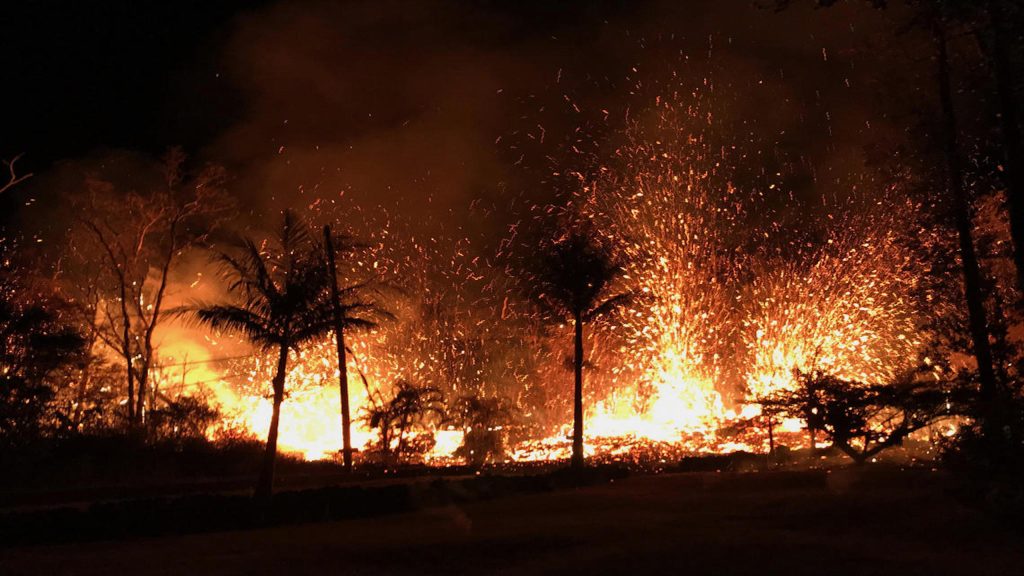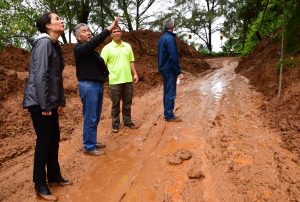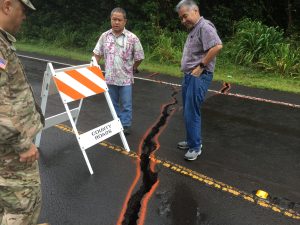Resilience in the face of floods, hurricanes and volcanoes
Posted on Oct 3, 2022 in Capitol Connection, Featured, Main

Gov. Ige thanked Renise Bayne and Pedraic Gallagher, Red Cross director of disaster services, for their help after Kaua‘i flooding.
Over the past eight years — especially in 2018 — the Ige administration responded to more natural disasters than any other period in state history. But with each incident, Hawai‘i has learned valuable lessons as communities and agencies came together to help residents rebuild. The state continues to plan for the future, including the threats from climate change, utility and system disruption, and impacts to harbors, airports and highways.
April 2018 – Devastating floods hit from Hāʻena, Wainiha and Kōloa on Kaua‘i to Waimānalo and Niu Valley on O‘ahu. The scenes were overwhelming: flooded homes, businesses and farmlands knee-deep in mud and floating debris everywhere. In the hardest hit areas on Kaua‘i, residents and tourists boarded Hawai‘i Air National Guard, Army and county helicopters to evacuate since many areas were isolated by landslides and left without electricity and water after the storm. Besides the rebuilding of Kūhiō Highway on Kaua‘i, the disaster led to a community-wide discussion and a plan to manage visitors and protect natural resources in the area.
May 2018 – An earthquake and the Kīlauea eruption threatened Puna residents with red-hot lava and toxic fumes. Governor Ige and his team were on the ground to work with county officials to reassure communities and move quickly on disaster declarations and recovery efforts. The lava flow destroyed over 700 homes and devastated residential areas. The governor, state and county officials and teams from many departments, the Hawai‘i National Guard, the Department of Defense, the Federal Emergency Management Agency (FEMA) and volunteers sprang into action to set up emergency shelters and provide supplies over the next few months.
“When I arrived in Puna, my first impression was this was a very different kind of eruption,” the governor said. “Fissures were opening in the middle of a subdivision, and we didn’t know if the eruption was going to last a few weeks or months. We had to be ready to execute plans if roads were lost to lava and air and sea evacuation became necessary.” The governor also moved to prevent a blowout of the wellheads at Puna Geothermal Venture power plant.
August 2018 – Hurricane Lane hit the islands — the first of three major hurricanes that year — followed by Tropical Storm Olivia. Governor Ige and a multitude of state, county and federal agencies and volunteers earned praise for the speedy, coordinated support provided as thousands of residents sought to rebuild their lives. For both storms, the governor held multiple news briefings with representatives from the National Weather Service, FEMA, the utilities, shipping, airlines and others from the community. One resident on Facebook wrote, “Super-impressed with the coordination of emergency response among all the agencies and the private sector. Thanks for keeping us safe.”



